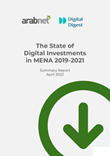
More than $900 million has been invested in regional digital startups in the last 4 years. With over 100 active institutional investors across the region, MENA has witnessed a significant proliferation of new funding institutions in the past 5 years, with Venture Capital (VC) funds, in particular, capturing the largest percentage of the investor community and doubling in number from 2013 to 2015. We spoke to key investors across the region to get their perspective on the state of venture capital in the region, the major trends, what they consider a good venture return, their predictions, and more. We have been sharing their insights in a series of posts. You can find part 1 here, part 2 here, and part 3 here.
What enabling components are still lagging in the MENA ecosystem? How do you see the current funded startups exiting?

Fares Ghandour
Partner @ Wamda Capital
Cross border scalability, red tape when entering new markets, and access to talent remain to be the overarching challenges for startups in the region. Liquidity will come with scale, and it will come from by way of exits to PE firms or large corporates, be they Asian or Western companies, or even local conglomerates and family businesses. Companies with great enough scale, say above $3bn-$5bn in valuation, will also look to be publicly listed on a global exchange, but the majority of liquidity to early stage investors will come from selling assets to later stage investors or corporates.

Managing Partner @ Faith Capital

Head of Investments @ Riyad Taqnia


The MENA startup ecosystem is nascent but has come a long way in the last few years. It is only natural for this to take time. The support system around startups is now developing at a faster pace - funding, incubators and accelerators, mentorship, and all the pieces of the puzzle are coming together gradually. The range of exit options are expanding: global players seeking to expand their footprint to MENA and local groups seeking to digitize and access innovation, both via acquisition as well as via a now more active secondary market. We have seen some significant activity in recent years such as the acquisition of Souq.com by Amazon, and Fetchr raising the largest Series B round in MENA thus far led by Silicon Valley-based VC New Enterprise Associates (NEA).
Latest Business
Intelligence Report














